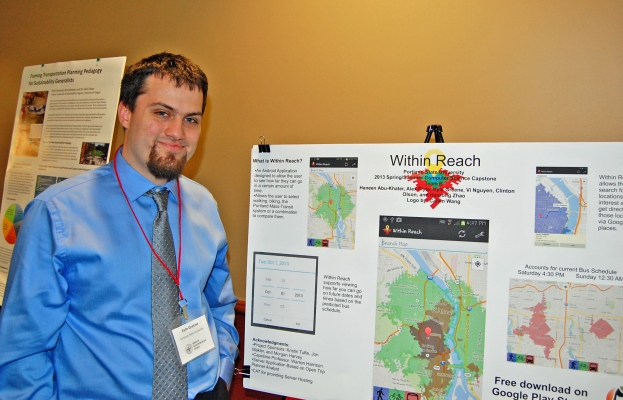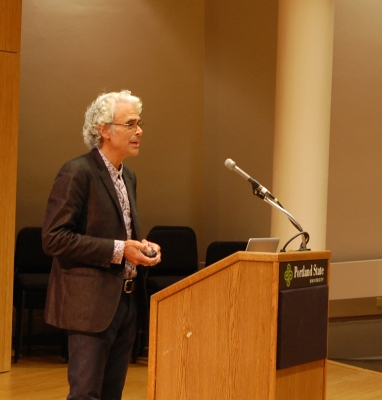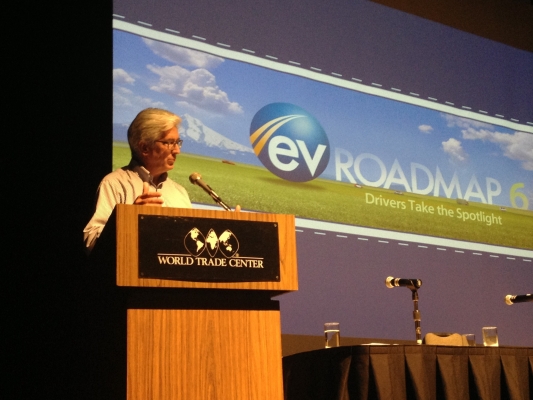A student participating in the Portland Bridges to Baccalaureate program completed a summer internship doing research for OTREC this year.
Yasmina Green, a 34 year old non-traditional student attending Portland Community College, was intrigued when she heard about the Bridges program. Green, who eventually hopes to get a master’s in public health at PSU, took advantage of the opportunity to secure a summer internship working in a public health-related field.
“I was a bit confused as to where I was going to go,” Green said. “Public health is so broad. The Green Lane project was something that kind of piqued my interest. I was a bike commuter.”
The Green Lane Project, a project of People For Bikes, has selected six cities to serve as pilot sites for new designs and approaches to creating comfortable, separated bike routes. OTREC researchers are involved in assessing the safety, operations, economic effects, user experience and perceptions of the new protected bikeways.
Green assisted researchers Jennifer Dill, Chris Monsere, and...
Read more






